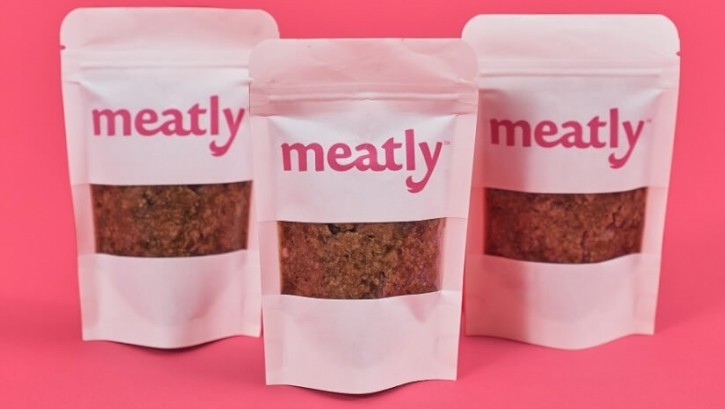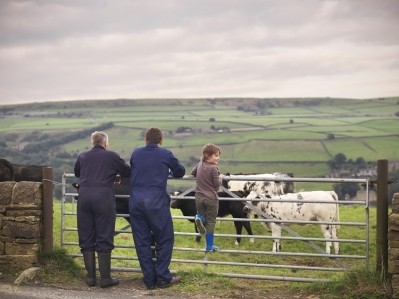Meatly gets UK approval for use of cultivated meat in pet food

This regulatory green light makes it the first company in the world to receive authorization for cultivated pet food, according to the startup.
Meatly secured approval after working closely with the UK’s Food Standards Agency (FSA), the Department for Environment, Food and Rural Affairs (Defra), and the Animal and Plant Health Agency (APHA).
“Over the last 18 months, we’ve proactively collaborated with the UK’s FSA, Defra, and APHA to clarify the regulatory pathway for cultivated pet food and pass the rigorous inspection process. They have now confirmed that we can sell our product. This is momentous because we’re the first to do this, achieving it in just two years with £3.5m (US$4.5m),” Meatly CEO, Owen Ensor, told FeedNavigator.
The company's production facility will be subject to regular inspections by APHA.
Established in 2022, and formerly known as Good Dog Food, Meatly is backed by Agronomics and Pets at Home. Its in-house scientists have developed a cultivated meat product using cells from a chicken egg to grow chicken meat.
Safety protocols
The startup also compiled a comprehensive safety dossier and conducted extensive testing to demonstrate that its cultivated chicken is safe and healthy for pets.
The testing, it reported, showed that the cultured meat is free from bacteria and viruses, the nutrients used to grow the cells are safe, and the final chicken product is nutritious and free from GMOs, antibiotics, harmful pathogens, heavy metals, and other impurities.
Industrial volumes
The company has been collaborating with pet food manufacturers and plans to launch the first samples of its commercially available pet food this year. Beyond these initial samples, Meatly’s primary focus will be on cost reduction, aiming to scale production to industrial volumes within the next three years.
Ensor added: “It’s likely that Meatly will send small-scale products to its manufacturing partners before the end of the year. However, with a focus on scaling in 2025, truly industrial production volumes are expected around 2026-27.”
Further feeding trials with dogs are planned for August as the company works to increase output while keeping expenses under control.
“One advantage is that mainstream pet foods combine meat with other ingredients, allowing us to further reduce costs by mixing our cultivated meat with other healthy plant-based ingredients if needed,” Ensor noted.
In May, Meatly announced the development of a protein-free culture medium, a first in the cultivated meat industry, setting a new benchmark by creating this medium for just £1 per liter, compared to the typical hundreds of pounds per liter. A culture medium, the mix of nutrients used to grow animal cells, is essential to the production process and accounts for most of the costs involved. Reducing these costs has been a major hurdle as the industry aims to scale up and achieve price parity with traditional meat products.
Environmental impact
How resource efficient is cultured meat production? Well, Meatly says its cultivated chicken is expected to use up to 64% less land, and 28% less water compared to traditional meat.
Additionally, Dr Shannon Falconer, CEO of BioCraft Pet Nutrition, a US incorporated company developing cultured meat for the pet food market, told us last year: “Several peer reviewed papers show the electricity nets out to be roughly the same for cultured and slaughtered chicken, specifically.”
A paper published in July 2022 determined that cultured meat could potentially be a sustainable and carbon-improved alternative to traditional meat but that a thorough life-cycle analysis (LCA), based on an actual production process, had yet to be performed. “A robust and reliable LCA is difficult to conduct at this stage, as there are still technical challenges and unknowns,” noted the authors.
The paper cited a study by Sinke & Odegard in 2021, in which those researchers used primary data from several cultured meat companies and concluded that cultured meat may have a better environmental impact over several conventionally produced meat types, resulting in less land use (for all meat types) and a lower carbon footprint (for beef, while being comparable to pork and chicken). They also concluded that a decreased carbon footprint could be achieved using renewables instead of conventional energy.
![1_CSO_and_CEO_Photo_Credit;_Jack_Lawson_-_Meatly[1]](/var/wrbm_gb_food_pharma/storage/images/_aliases/reference/media/images/1_cso_and_ceo_photo_credit-_jack_lawson_-_meatly-1/17592316-1-eng-GB/1_CSO_and_CEO_Photo_Credit-_Jack_Lawson_-_Meatly-1.jpg)
![Meatly_Future_Facility[1]](/var/wrbm_gb_food_pharma/storage/images/_aliases/reference/media/images/meatly_future_facility-12/17592352-1-eng-GB/Meatly_Future_Facility-1.jpg)
























